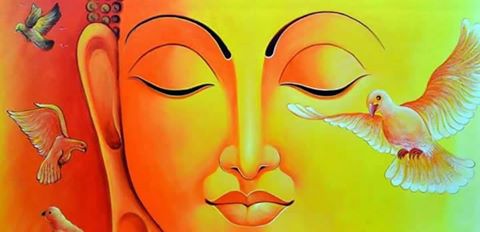
Reflection on the Buddha
We often see the Buddha sitting cross-legged and in deep absorption with a loving smile as if he has gone beyond the normal experiences of life. What is it to be the Buddha is difficult to know fully, but one can perhaps experience the flashes of his understanding by walking along the path he suggested?
Reflection on the Buddha
The Buddha is endowed with buddhi, the root of the word Buddha is “bujh” which means knowing. One who knows is the Buddha. What does the Buddha know? He knows the highest, figuratively, but he also knows the deepest and the subtlest. Therefore, the Ratan Sutta describes the Buddha as:
–
Varo (the highest)
Varannu (the knower of the highest)
Varado (the giver of the highest)
Varaharo (one who lifts you to the highest)
Anuttaro (unparalleled in the world)
The Buddha is the highest perfection reached by a human being. To describe the Buddha in terms of his mental qualities it’s difficult. Therefore, many images and symbols and concepts and philosophical reflections are used to understand him. But the most direct way of understanding the Buddha is through meditation.
The Buddhist system of meditation is simple and it is not abstract. The word for the meditation used by the Buddha is Bhavana, which means cultivation. The cultivation of Citta (mind) and Metta (loving kindness). The cultivation is just like cultivating the farm. It needs efforts and patience. But the principles of meditation are simple, though there are many methods.
The foundational principles of meditation are:
- Attain the natural quality of the human mind (the quality of awareness)
- Examining every experience through awareness and understand the nature of those experiences
- An open mind that is not limited and stopped by anything
The methods are many, but the principles are the same.
Author – Mangesh Dahiwale, Human Rights Activist




+ There are no comments
Add yours